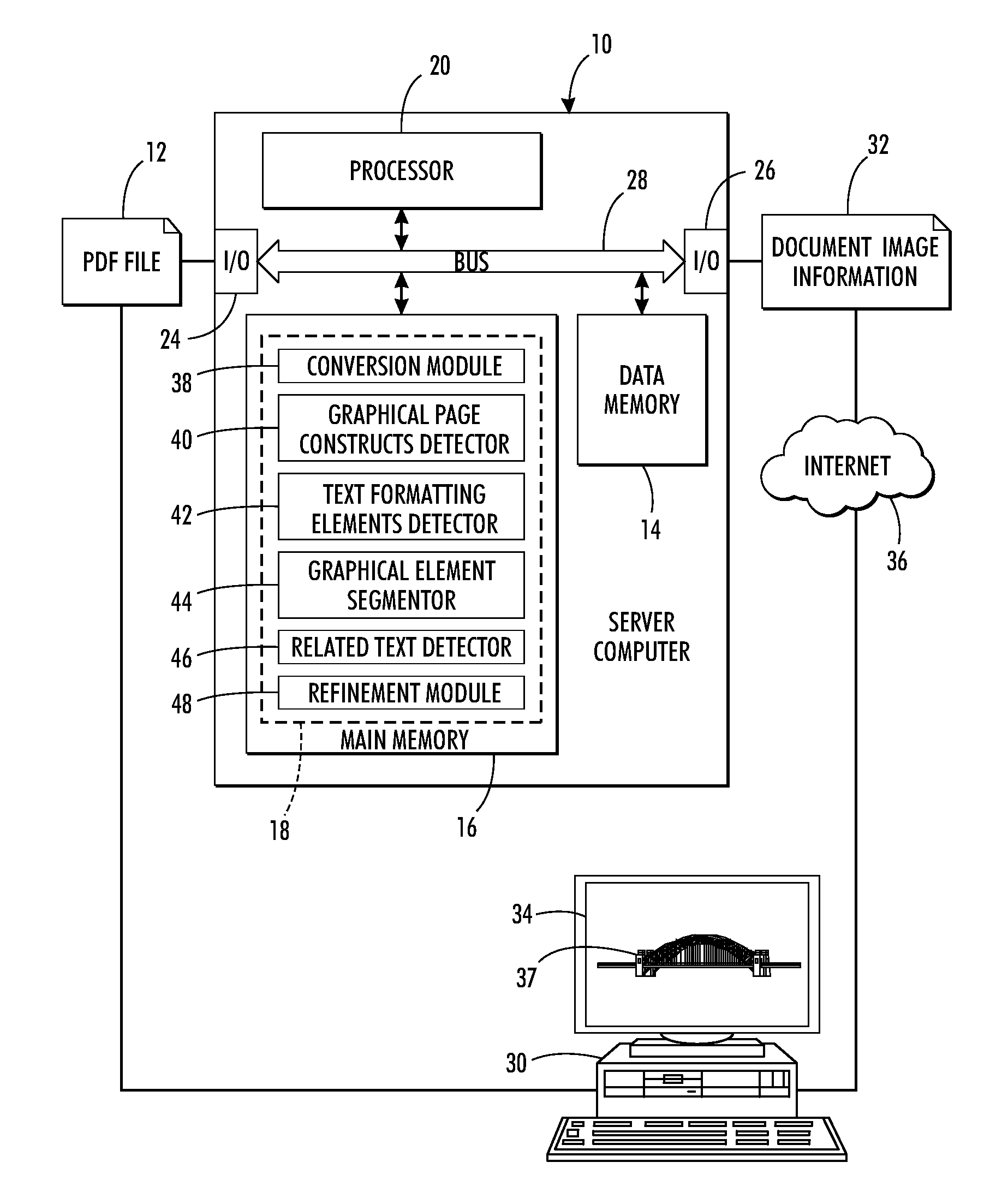Detection and extraction of elements constituting images in unstructured document files
a technology of image and document file, applied in the field of document processing, can solve the problems of not defining an image structure in the pdf standard, the difficulty of automatic recognition of images, and the elements which compose them, and the method is unable to detect figure-caption pairs in contemporary scientific documents
- Summary
- Abstract
- Description
- Claims
- Application Information
AI Technical Summary
Benefits of technology
Problems solved by technology
Method used
Image
Examples
example
[0113]Since there is no available dataset for evaluating the exemplary method, an approximated ground-truth dataset was created using PDF files. A clipping zone is associated with some graphical elements of some of the files. This clipping zone corresponds to the bounding box of the (global) image. For such PDF files, these clipping zones are extracted as ground-truth. The clipping zone corresponding to the entire page is systematically ignored, and clipping zones that are too small are also ignored. This creates a fairly accurate ground-truth (with some small errors). Only graphical elements occurring in a page with such clipping zones are evaluated (ignoring, for this experiment, pages with two images and where only one has a clipping zone). The accuracy of this ground-truth is satisfactory for evaluating which steps of the method are most useful. The evaluation was carried out with a fairly challenging document containing around 800 diagrams (including tables, charts, raster and ...
PUM
 Login to View More
Login to View More Abstract
Description
Claims
Application Information
 Login to View More
Login to View More - R&D
- Intellectual Property
- Life Sciences
- Materials
- Tech Scout
- Unparalleled Data Quality
- Higher Quality Content
- 60% Fewer Hallucinations
Browse by: Latest US Patents, China's latest patents, Technical Efficacy Thesaurus, Application Domain, Technology Topic, Popular Technical Reports.
© 2025 PatSnap. All rights reserved.Legal|Privacy policy|Modern Slavery Act Transparency Statement|Sitemap|About US| Contact US: help@patsnap.com



